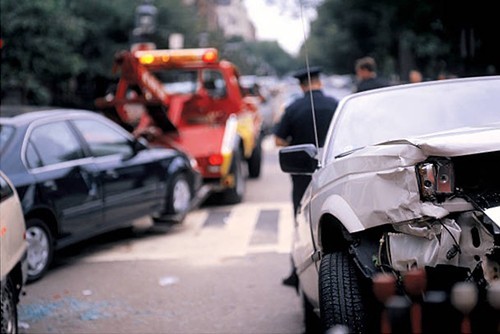Using Your Smartphone to Gather and Preserve Evidence Could Help Maximize Your Personal Injury Settlement
If you’ve been involved in an accident, your safety and the safety of those with you should always take precedence. However, if you’re able to document the accident scene safely with your phone, this information can be critical to any claim you may make in the future.

When an accident occurs, most people will immediately use their phone to call the police, their insurance company, or their personal injury attorney. It’s important to know that your phone can also be a tool to gather information to support your case and, potentially capture important details if they later come into question.
Why is it so important to gather evidence right after the accident?
When it’s safe to do so, documenting the scene after a car accident with your phone camera or video recorder can help provide a clear and accurate picture of what really happened. In some cases, these images may also help corroborate your account of the crash, and support your personal injury claim. There are instances when people may try to leave the scene or change critical elements at the site before the authorities get there. Taking real-time photos can help document the event and reduce possible omissions or potential deception by other parties.
Your smartphone can come in handy to take clear, time-stamped, accurate pictures and video. These records can help assist your personal injury attorney in determining fault, extent of damage, potential environmental conditions that may have played a factor, as well as a host of other details that could benefit your claim.
What types of information should be gathered at the scene?
To provide your personal injury lawyer with the most useful images possible, the following provides the images that can be beneficial to take:
- Information from the other party
If you can get the name, address, and even a picture of the driver’s license of the other person, you have key information at the outset. If they can provide an insurance card, that’s even better. Make sure you take a photo of their vehicle, including the license plate and possible damage from the accident.
- Scene of the accident
The scene is very important. If possible, take photos from different angles and distances. This showcases how things look from different directions. Photos can be studied to extract additional information that may be overlooked. Be very specific and intentional in your photos. Try to get any skid marks, the location of the vehicles where the accident occurred, and any photos of where the vehicles may have been moved to. If there is any damage to a pole or other nearby items, you need photos of those as well. If a stop sign or red light is involved, photos of those should be taken as well.
- Injuries
If you, or others in your party, have any visible injuries, use the phone to take pictures of those injuries, as they may change over time. If you have any sore spots that do not show visible injuries, it’s also a good idea to take photos of those areas. Photos of the other party’s injuries or condition, such as walking around and talking to others, can help keep a record of that person’s condition prior to leaving the scene.
- Damage to vehicles
Any vehicle damage should be photographed. Both vehicles should be photographed from all angles to make sure the extent of the visible damage is captured. Damage to the chassis or the structural integrity of the vehicle may be difficult to photograph, but the visible damage to the vehicle can help provide insight to unseen issues.
- People in the vicinity and eyewitnesses
If there were witnesses to the accident, getting their information, which includes their name, address, and telephone number can be to your advantage. If you can get a videotaped witness statement, that can work well, particularly if they corroborate your account of the accident. This eyewitness information can often help support your case. In addition, capturing the license plates of cars in the vicinity may also help you locate additional eyewitnesses.
- Cause of the accident
If you can show what caused the accident and get a photograph of the items (road debris, poor road conditions, etc.) involved, this may also help our attorneys and legal experts determine possible causation and severity of the accident.
- Additional information
The notepad on your smartphone can also help keep names and contact details in order. Having the contact information of the drivers, police officers, ambulance services, EMTs, towing company and insurance companies can help you provide essential information to your personal injury attorney, and get your legal case started more quickly.
Many insurance companies provide a mobile app to help you verify your coverage and insurance details. These apps can also be useful in providing insurance details when you speak with our attorney during your initial consultation. Our attorneys provide experienced legal representation and understand how to use the information you’ve gathered to help maximize the recovery on your personal injury claim.
By using your smartphone to capture and manage essential accident information, you also reduce the stress of having to track down the information weeks, or even months, later. Even better, you’ve provided your personal injury attorney with the means to get the details of your case more readily. Personal injury cases can be difficult to document after the fact, especially when the scene and the condition of the parties involved change over time. Using your smartphone to capture key details at the scene from the very beginning can be essential to the success of your case.
Even though you may not know how the process works, your Dunnion Law team has both the experience and the potential benefit of your smartphone photos to help navigate you smoothly through your legal journey.